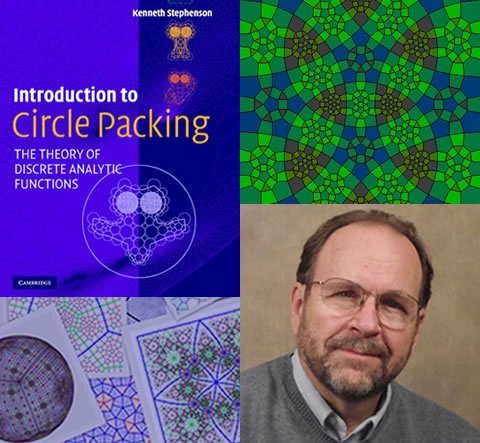Ken Stephenson is a professor emeritus in the math department at the University of Tennessee. His areas of research revolve around circle packing, such as connections to analytic function theory, Riemann surfaces, computational conformal structures, and applications.
WHAT IS CIRCLE PACKING?A circle packing is a configuration of circles with a specified pattern of tangencies. The circles typically must assume a variety of different sizes in order to fit together in a prescribed tangency pattern. It is easy to confuse this with the well known topic of 'sphere packing', how many ping pong balls fit in a box car, but there is almost no contact between these two topics.
HISTORY OF CIRCLE PACKINGCircle packings were first introduced by William Thurston in his Notes. Maps between circle packings, which preserve tangency and orientation, act many ways as discrete analogues of analytic functions. Moreover, work flowing from a 1985 conjecture of Thurston, proven by Burt Rodin and Dennis Sullivan, shows that classical analytic functions and more general classical conformal objects can be approximated using circle packings.
Circle packings are computable, so they are introducing an experimental, and highly visual, component to research in conformal geometry and related areas. Circle packings are also useful in graph embedding, and have interesting connections to random walks.
ADDITIONAL INFORMATIONOther areas of Ken's research include analysis, computational and applied mathematics, and probability and stochastic processes.
Contact Ken if you have questions about his research, or would like to discuss any other topics.
Images below are from the book Ken Stephenson wrote,
"Introduction to Circle Packing: The Theory of Discrete Analytic Functions", Cambridge University Press (2005).
 ABOUT
PUBLICATIONS
BOOKS
SOFTWARE
CONTACT
ABOUT
PUBLICATIONS
BOOKS
SOFTWARE
CONTACT

